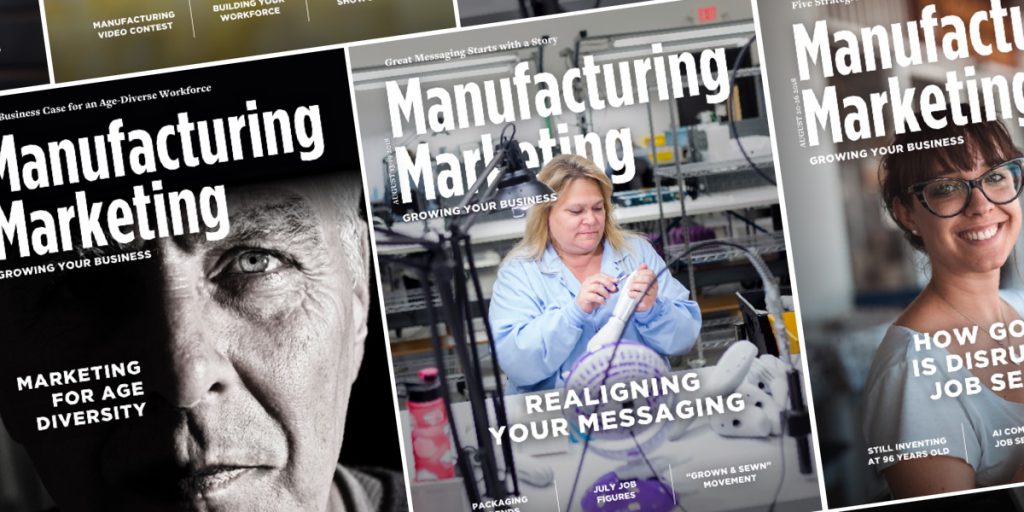
Manufacturing Marketing Magazine empowers small manufacturers with marketing expertise.
Dianna Huff and Rachel Cunliffe of Plaistow, N.H, are the founders and publishers of the new Manufacturing Marketing Magazine, the first of its kind dedicated to small manufacturers. The Alliance for American Manufacturing spoke with Dianna to learn more about the magazine and the vital niche it fills.

Q: Tells us more about your magazine, Manufacturing Marketing.
A: The magazine was founded by my colleague, Rachel Cunliffe, and me. It’s the first magazine dedicated to helping small, family-owned industrial manufacturers grow their businesses through marketing.
Q: How did you first get involved with the manufacturing sector?
A: I put myself through school making sails for sailboats, and then worked seven years for a small, woman-owned manufacturing company. When I went out on my own in 1998, I continued to work with small manufacturers.
Q: You work with a lot of small-to-medium sized manufacturers. How are the needs of these companies different than larger firms?
A: Rachel Cunliffe and I work with companies ranging in size from 20 to 50 employees. Most of them are family-owned.
These companies often lack the staff and resources to grow in significant ways. For example, a company wants to grow from $5 million annual sales to $10 million. They lack the experienced staff who can help them with this growth, and they lack the systems needed to achieve and sustain this growth.
And, because they’re family-owned, they face their own unique family dynamics – which can sometimes hinder growth.
Q: What can policymakers do to support small manufacturers?
Stop passing so many laws and regulations that negatively impact their businesses and start finding ways to help small business owners succeed.
Of the close to 252,000 manufacturers in the US, the vast majority employ 20 or fewer people (source: NAM). Manufacturing firms also account for close to 9 percent of the workforce, which means, small manufacturers play a vital role in their local communities while also pumping much needed money into them.
Policymakers should be looking for ways to help these small firms grow and hire new employees, such as the Tax Cuts and Jobs Act of 2017.
Q: Why do the small manufacturers that you cover choose to manufacture in the U.S. and not abroad?
The manufacturers I’ve spoken with do it for various reasons. Some simply want to support American manufacturing because it’s important to them. Others have found, once they run the numbers, that it’s actually more cost-effective to manufacture in the U.S. vs. abroad.
Polar Bottle, for example, which manufactures water bottles for cyclists, as well as other items, keeps its manufacturing stateside because they want to keep people employed in the local community, use locally sourced products, and significantly reduce the company’s environmental impact.
The Plastic Forming Company (PFC), a manufacturer of hard-sided plastic cases, has found it can cost-effectively produce items in the U.S. through continual innovation.
Q: What makes Manufacturing Marketing stand out?
No other magazine covers marketing tactics specifically geared for small manufacturers.
You can find a great deal of technical information, and even business information, in trade publications, but little if any marketing information.
We want Manufacturing Marketing to be the resource small manufacturers turn to when they need practical marketing tactics that work. We use our own experience working with small manufacturers, plus interview people within smaller firms for their insights, rather than repurposing consumer or B2B tactics – most of which are over-hyped or difficult and costly to implement.
